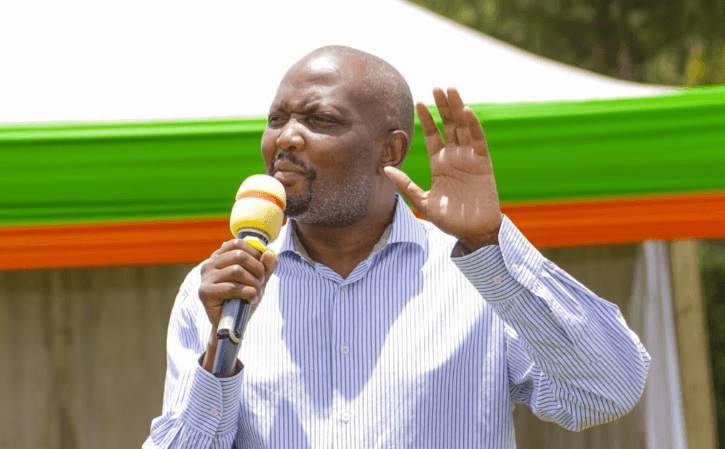Loading News Article...
We're loading the full news article for you. This includes the article content, images, author information, and related articles.
We're loading the full news article for you. This includes the article content, images, author information, and related articles.
Former Trade Cabinet Secretary Moses Kuria has reflected on his two-year departure from the Ministry of Investments, Trade and Industry, highlighting key initiatives launched during his tenure aimed at rapid industrialisation and job creation.

Former Cabinet Secretary for Investments, Trade and Industry, Moses Kuria, has reflected on his tenure, two years after his departure from the ministry. In a statement on his X account on Saturday, October 4, 2025, Kuria highlighted his efforts in launching Special Economic Zones (SEZs), Export Processing Zones (EPZs), and County Aggregation and Industrial Parks (CAIPs) as key achievements towards rapid industrialisation and job creation for Kenyan youth.
Kuria, who served as Trade CS for 11 months and 6 days, from his appointment on September 27, 2022, until his reassignment in the October 2023 cabinet reshuffle, expressed disappointment that his dream of transforming Kenya into a foreign investment hub has not been fully realised.
During his time at the Ministry of Investments, Trade and Industry (MITI), Kuria championed several initiatives to boost Kenya's economic landscape. He aimed to increase the manufacturing sector's contribution to GDP from 7% to 20% within ten years and attract foreign direct investment (FDI) from an annual $500 million to $10 billion.
Among his notable achievements, Kuria cited the implementation of the Exports and Investments Promotion Levy, designed to discourage unnecessary imports. He also highlighted securing a pipeline of 26 mega deals from the Gulf Region and Indonesia, and successfully negotiating KSh 450 billion in investment from Afriexim Bank for e-mobility, SEZs, and EPZs.
Kuria was instrumental in advancing Kenya's participation in the Pan African Payment and Settlement System and finalising the Economic Partnership Agreement with the European Union. He also engaged with 12 African Heads of State to promote the unification of the East African Community (EAC), Southern African Development Community (SADC), and the Common Market for Eastern and Southern Africa (COMESA) under the Tripartite Free Trade Agreement.
A significant part of Kuria's strategy involved the establishment of industrial parks and economic zones across the country. He launched County Aggregation and Industrial Parks in 13 counties, including Mombasa, Garissa, Kisii, and Kajiado, and initiated the procurement process for CAIPs in the remaining 31 counties. These parks were envisioned to aggregate, process, and promote locally made products, create jobs, and boost industrialisation.
Kuria also declared several new Export Processing Zones in various counties, including Kirinyaga, Kilifi, Kwale, Uasin Gishu, Busia, Mombasa, Machakos, and Narok. These zones aimed to attract foreign investment, create employment, and increase exports. He also secured a KSh 39 billion investment from a Belarusian company for a fertiliser manufacturing firm within the Dongo Kundu Special Economic Zone in Mombasa. Additionally, Pan African Industrial Spaces Developer Arise (ARISE IIP) committed KSh 60 billion to the Dongo Kundu SEZ.
While Kuria's initiatives aimed to spur industrial growth and job creation, his recent reflections indicate a perceived slowdown in achieving these ambitious goals. The success of these zones and parks hinges on sustained investment, effective policy implementation, and a conducive business environment. Analysts suggest that clarity on timelines, costs, and safeguards is crucial for the long-term viability of these projects.
The specific reasons for the perceived stagnation of the industrialisation dream, as expressed by Kuria, remain unclear. Further details on the current operational status and economic impact of the launched Special Economic Zones, Export Processing Zones, and County Aggregation and Industrial Parks would provide a more comprehensive understanding of their progress.